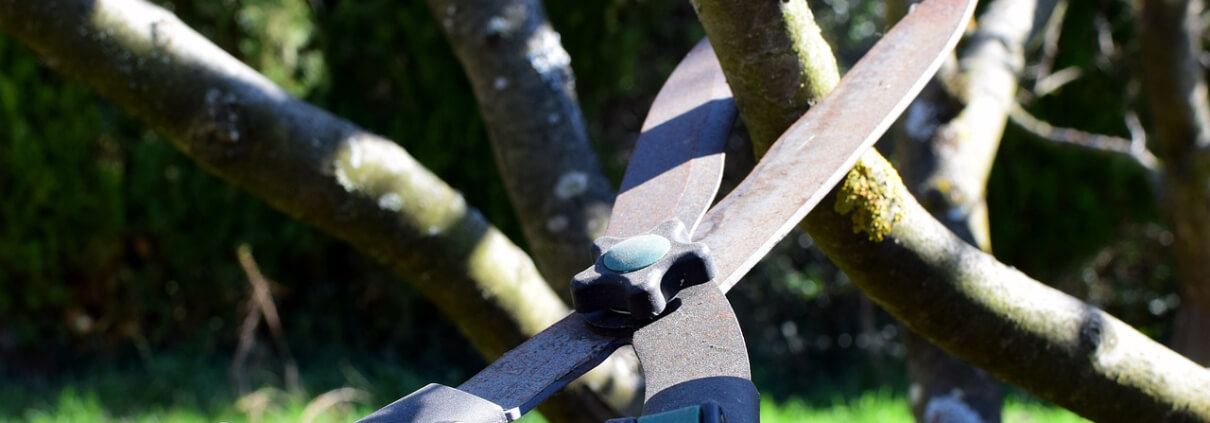The Importance of Tree Pruning: A Guide to Enhancing Health and Beauty
Trees play a critical role in enhancing the beauty and value of any property. They provide shade, improve air quality, and create a vibrant, natural environment for our homes and gardens. However, proper tree maintenance is crucial to ensure their health, safety, and stunning appearance. One of the essential aspects of tree care is tree pruning, which not only enhances their aesthetics but also contributes significantly to their overall health.
Tree pruning involves carefully removing certain branches or limbs in a manner that promotes healthy growth, maintains the tree’s shape and structure, and prevents any potential hazards. It’s quite a delicate process that requires a sound understanding of tree biology, as careless cutting can severely damage your trees or even shorten their lifespan.
So, we’ll dive into the various benefits of pruning your trees, how it’s done, and some crucial tips on when to call in professionals for the job. Whether you’re a seasoned gardener or simply looking to improve your green thumb, we’ll help you make informed decisions on maintaining your trees and keeping your garden lush and thriving.
Benefits of Tree Pruning:
1. Improves tree health: Removing diseased, infested or dead branches will prevent the spread of harmful organisms and enhance the health of your trees. Regular pruning also promotes proper air circulation and sunlight penetration, vital for the growth and well-being of your trees.
2. Maintains safety: Overgrown trees with weak or dead branches can pose risks to people, property, and power lines if they fall unexpectedly. Tree pruning helps to eliminate these potential hazards for a safer and secure landscape.
3. Encourages fruit production: If you have fruit trees, regular pruning can lead to more abundant and healthier fruit yields by facilitating better airflow and sunlight exposure.
4. Enhances aesthetics: Neat and well-trimmed trees significantly improve the visual appeal of your property. Pruning maintains the desired shape and size, giving your trees a beautiful and uniform appearance.
5. Inspects tree conditions: Regular pruning allows you to identify any signs of weakness, disease, or decay, helping to address issues before they become severe problems.
Now that you understand the importance of tree pruning, you may wonder when to call in the professionals. While minor trimming tasks can be carried out independently, seeking expert assistance is always the best option for maintaining the health and beauty of your garden. TPS Tree Services possesses the necessary skills, equipment, and experience to ensure the job is done correctly and safely.
Ready to give your trees the care they deserve? Reach out to TPS Tree Services today for all your tree pruning needs!
Tree Pruning Techniques: A Step-by-Step Guide
To achieve the best results from tree pruning, it’s important to familiarise yourself with the various techniques and approaches. While some situations may require professional assistance, basic pruning can be performed by anyone willing to learn the ropes. Here’s a step-by-step guide to pruning trees effectively:
1. Identify the Branches to be Pruned
Before starting the pruning process, carefully examine the tree and identify which branches need to be removed. Focus on dead, diseased, or damaged branches, as well as those that are growing inwards or rubbing against others. Additionally, look for branches that could obstruct walkways or impede the growth of other plants in your garden.
2. Prepare the Necessary Tools
Having the right tools will make your tree pruning task more manageable and efficient. Examples of essential tools include:
- Hand pruners: Ideal for cutting small branches up to 1 inch in diameter
- Lopping shears: Suitable for branches between 1 and 2 inches thick
- Pruning saws: Best for branches thicker than 2 inches
Always ensure your tools are sharp and clean to prevent injury or the spread of diseases among your trees.
3. Choose the Right Pruning Method
Depending on the objective of your pruning task, various methods can be applied:
- Thinning: This involves selective branch removal to improve air circulation and light penetration. Thinning should be done sparingly, removing no more than 25% of a tree’s crown in a single session.
- Raising: This method focuses on the removal of lower branches to raise the height of a tree’s canopy. It’s often used for trees near sidewalks or roads.
- Reduction: When a tree grows too large for its environment, reduction pruning may be necessary. This method reduces the tree’s size while maintaining its natural shape.
4. Use the Correct Pruning Cuts
Proper pruning cuts are essential to ensure the health of your trees. Two main types of cuts are:
- Heading cuts: These shorten branches by removing the end part of a shoot or branch. This invigorates growth in the bud surrounding the cut, resulting in denser foliage.
- Thinning cuts: This technique removes an entire branch back to its origin. Thinning cuts help to maintain the tree’s natural shape and promote better air circulation.
When making cuts, always trim at an angle and avoid leaving a stub, as it can lead to decay or disease.
A Year-Round Approach to Tree Pruning
While tree pruning should be carried out regularly, it’s essential to know the best time to prune different types of trees. Here’s a quick guide to the optimal pruning times for various tree species.
1. Evergreen Trees
These trees can be pruned during any season but avoid extreme heat or cold. It’s generally best to prune them in late winter or early spring when growth is about to begin.
2. Deciduous Trees
For deciduous trees, the ideal pruning time is during their dormant season, typically between late autumn and early spring. This allows for easy visibility of the tree’s structure and reduces the risk of transmitting diseases when insects and fungi are less active.
3. Flowering Trees
To maximise the flowering potential of your trees, follow these guidelines:
Prune spring-flowering trees in late spring or early summer, after they’ve finished blooming.
Prune summer-flowering trees in late winter or early spring, just before new growth begins.
Tree Pruning Safety Tips
Tree pruning can be dangerous if not performed with the necessary precautions. Keep these safety tips in mind when undertaking your pruning tasks:
1. Wear Protective Gear: Equip yourself with gloves, safety glasses, and a sturdy pair of shoes to prevent injuries.
2. Inspect Your Tools: Check your tools for any damage before use and ensure they’re sharp for efficient cutting.
3. Use a Ladder Safely: When using a ladder, always have someone hold it for stability and never overreach while pruning.
4. Don’t Prune Near Power Lines: If your tree is close to power lines, contact a professional tree service like TPS Tree Services.
Prune Your Trees for Optimal Health and Beauty
Tree pruning is a crucial aspect of maintaining a beautiful and healthy garden. By following the techniques and guidelines outlined in this guide, you’ll be well on your way to achieving the lush, vibrant environment you’ve always dreamed of.
However, for more complex pruning tasks or if you’re unsure of the best approach, don’t hesitate to contact TPS Tree Services. Our team of experts can handle all your tree pruning needs in Brisbane, ensuring a safe and efficient process that benefits both you and your trees.




